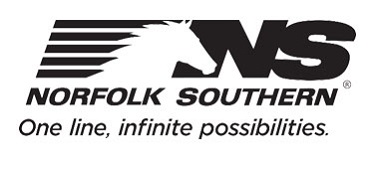The operational changes mean traffic is moving faster and more dependably, all while reducing costs by permitting NS to use fewer locomotives and freight cars, CEO Jim Squires says.
The use of distributed power has more than doubled as NS is concentrating tonnage on fewer but longer, heavier trains. As a result, the number of road train starts has declined by more than 10%, to around 390 per day.
The railroad has reduced its reliance on major terminals, which has cut car circuitry by 20% and train miles by 15%. And NS has converted its hump yards in Allentown, Pa., and Sheffield, Ala., to flat-switching facilities after volumes handled at the yards declined under TOP21.
The TOP21 plan, which is based on the principles of Precision Scheduled Railroading and builds on the redesign of local and terminal operations over the past 18 months, affects nearly 90% of Norfolk Southern’s merchandise and automotive traffic, Chief Operating Officer Mike Wheeler says. The plan also brings changes to the railroad’s bulk network.
NS was able to avoid service disruptions that sometimes accompany abrupt and widespread operational changes.
Executives told investors and Wall Street analysts on Wednesday that implementation of the plan went flawlessly, citing the way average train speed, terminal dwell, and on-time performance remained at record positive levels.
“The service metrics and the network velocity metrics are trending very favorably, and that’s something we’re extremely proud of … having just cut over to a new operating plan with far-reaching effects on our traffic,” Squires says.
NS is preparing another wave of distributed power use, Wheeler says, and is working on a second phase of TOP21 that will be implemented early next year and include the railroad’s intermodal network.
NS continues to evaluate its network of hump, regional, and local yards across the system as the new operating plan changed switching volumes, Squires says.
“We already converted two hump yards to flat switch operations coming out of TOP21 and we’ll continue to look things over,” Squires says. “It really depends on the level of volume … that’s moving through a given yard. Once that volume drops below a certain level, it makes sense to convert to a flat-switch operation as long as you are going to keep it open.”
The TOP21 plan involves running more general-purpose trains, balancing crews and power by running the same number of trains in each direction every day, and providing more frequent local switching service to carload customers. Also a key: Reducing dependence on hump yards by pre-blocking cars at local terminals and then relying more on block-swapping en route.
Last fall NS announced it would adopt a PSR-based operating model to provide more reliable service while boosting profitability.















I can say that NS service has gone from bad to worse, maybe the customer should be consulted on how they are. I would challenge the CEO of any railroad doing PSR to find us one happy customer.
Sounds like they are doing good maybe they can now run amtrak crescent ,capital limited ,lake Shore Limited on time now. Prob not
No mention of the 11 empty headend cars that stringlined on the Horseshoe Curve 2 weeks ago, surely PSR put that train together.
Wall Street was so overjoyed that the stock plummeted 10% in one week.